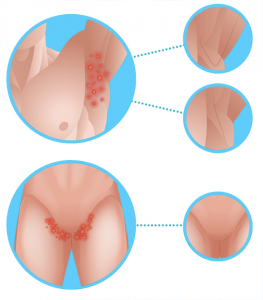
Hidradenitis Suppurativa: Understanding Symptoms and Diagnosis
Hidradenitis Suppurativa (HS) is a chronic skin condition that often remains misunderstood and misdiagnosed. Characterized by painful nodules, abscesses, and tunnels under the skin, HS can significantly impact one’s quality of life. In this blog, we aim to shed light on the symptoms of HS, the diagnostic process, and stress the importance of consulting an HS specialist for proper management.
Understanding Hidradenitis Suppurativa
HS is a skin disorder that primarily affects areas where skin rubs together, such as the armpits, groin, buttocks, and under the breasts. It is often painful and can lead to recurrent flare-ups that result in the formation of lumps and abscesses. The exact cause of HS is not fully understood, but it is believed to involve a combination of genetic, environmental, and immune system factors.
Common Symptoms of Hidradenitis Suppurativa
- Painful Nodules and Abscesses: HS typically begins with the formation of painful lumps under the skin, which can progress to abscesses filled with pus.
- Tunnels or Tracts: Over time, tunnels or tracts may form beneath the skin, connecting the abscesses. These can lead to the formation of scars and can be a hallmark sign of HS.
- Recurrent Flare-ups: HS is characterized by recurrent flare-ups, with periods of improvement followed by episodes of increased inflammation and symptoms.
- Draining Pus: In severe cases, the abscesses may rupture, draining pus and causing further discomfort.
Diagnosing Hidradenitis Suppurativa
Diagnosing HS can be challenging, as its symptoms may be mistaken for other skin conditions. It is crucial to consult a healthcare professional, preferably an HS specialist, for an accurate diagnosis. The diagnostic process may involve:
- Clinical Examination: A thorough physical examination to assess the extent and severity of the lesions.
- Medical History: Understanding the patient’s medical history, including family history, can provide valuable insights.
- Imaging Studies: In some cases, imaging studies such as ultrasound or MRI may be used to visualize the affected areas.
- Biopsy: A skin biopsy may be performed to rule out other skin conditions and confirm the diagnosis of HS.
The Importance of Consulting an HS Specialist
Given the complexity of HS, seeking care from a specialist is crucial for proper management. Plastic Surgeons with expertise in HS can offer:
- Accurate Diagnosis: Specialists are trained to differentiate HS from other skin conditions, ensuring a precise diagnosis.
- Tailored Treatment Plans: HS management often requires a multifaceted approach, including lifestyle modifications, medications, and sometimes surgical interventions. A specialist can develop a personalized treatment plan based on the individual’s needs.
- Emotional Support: Dealing with a chronic skin condition can take a toll on mental health. HS specialists can provide emotional support and resources to help patients cope with the challenges.
Conclusion
Demystifying Hidradenitis Suppurativa involves recognizing its symptoms, undergoing a thorough diagnostic process, and seeking the expertise of an HS specialist. If you suspect you may have HS or are experiencing symptoms, take the first step towards effective management by scheduling a consultation with Dr. Som, an experienced HS specialist. Don’t let HS impact your quality of life—reach out to Dr. Som for personalized care and support on your journey to skin health and well-being.
